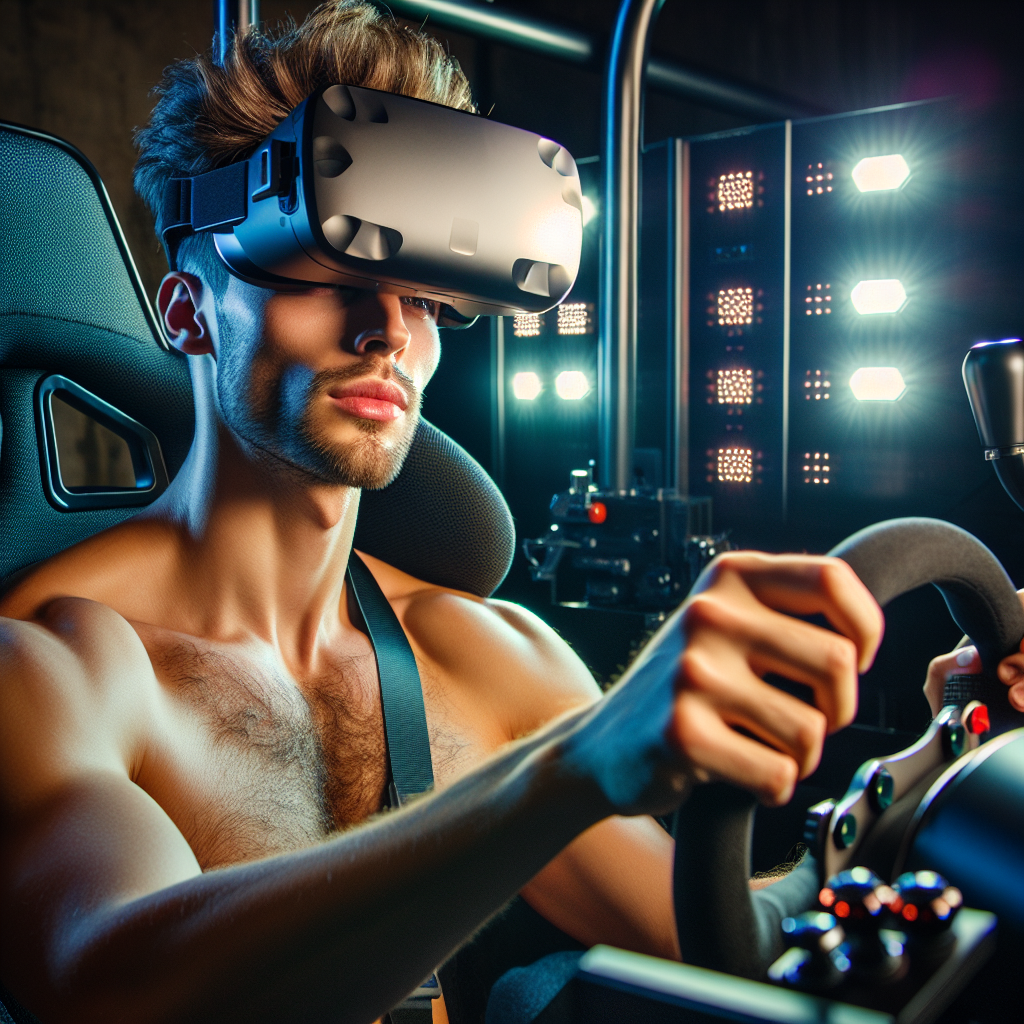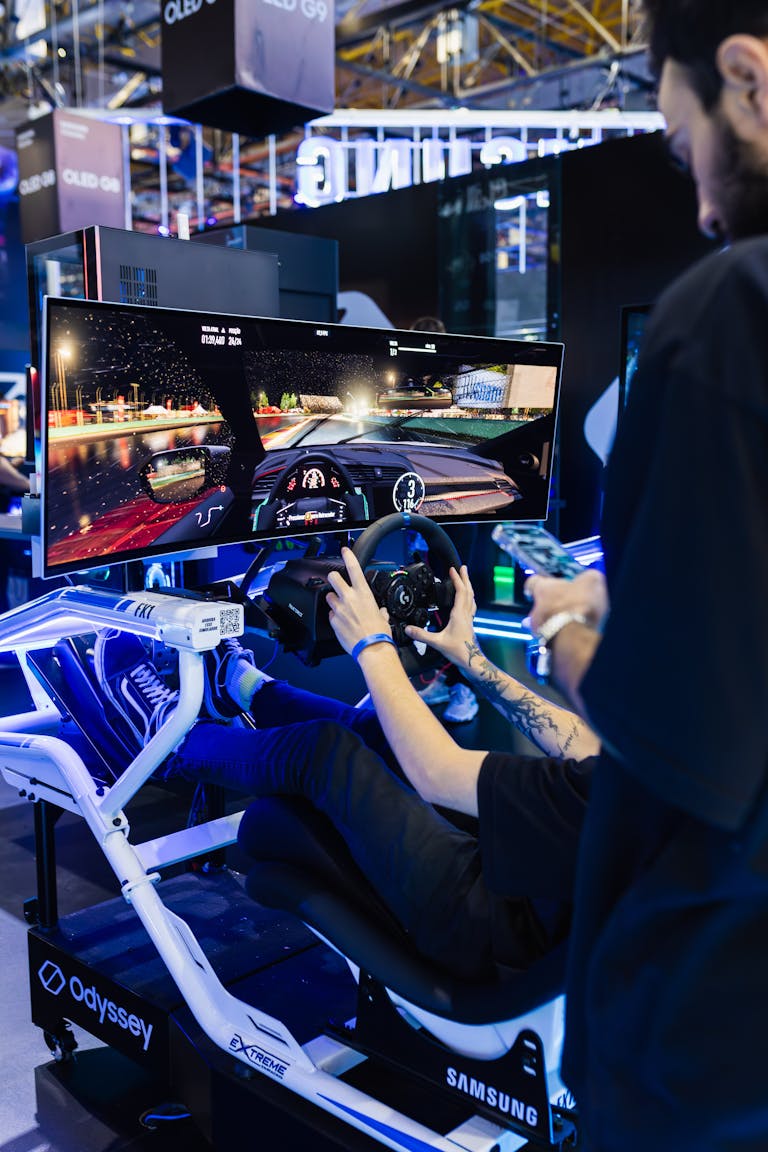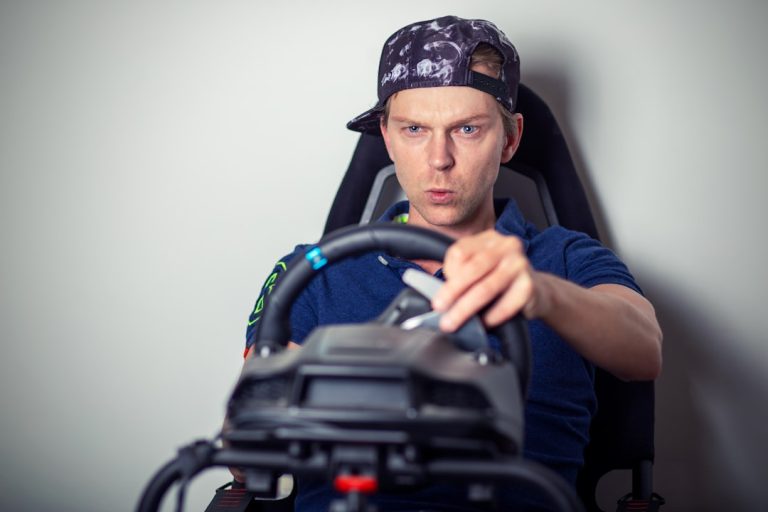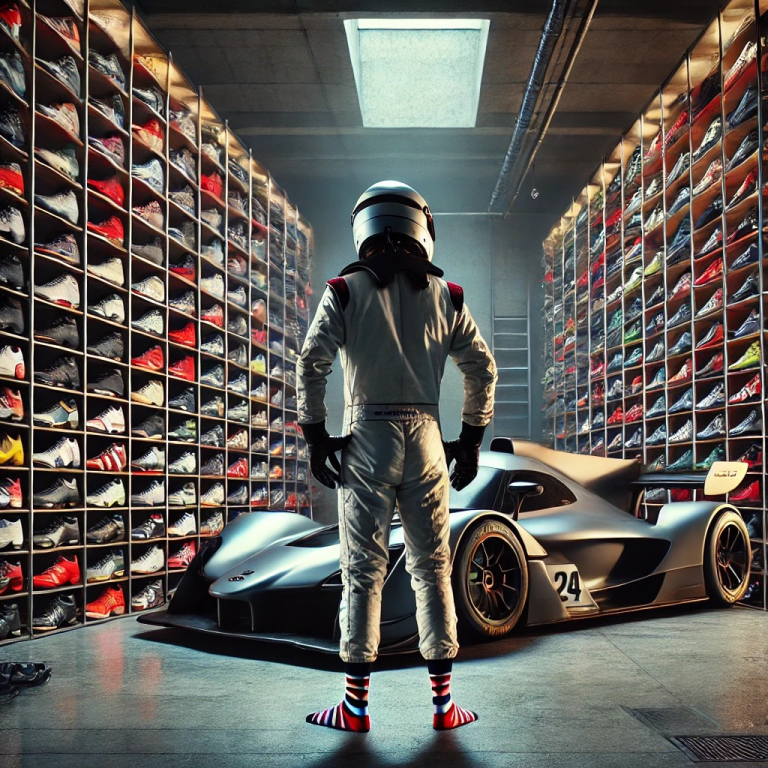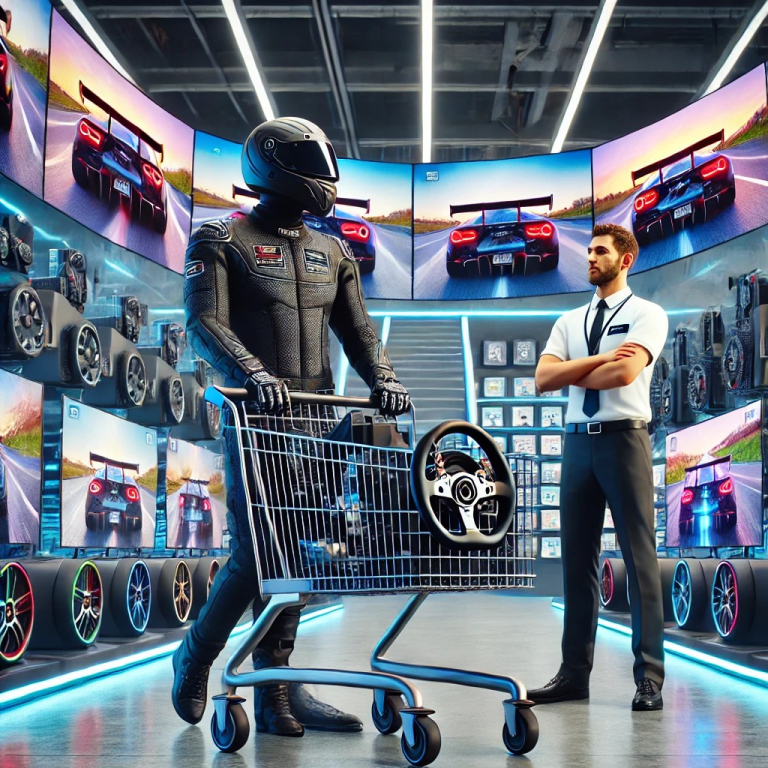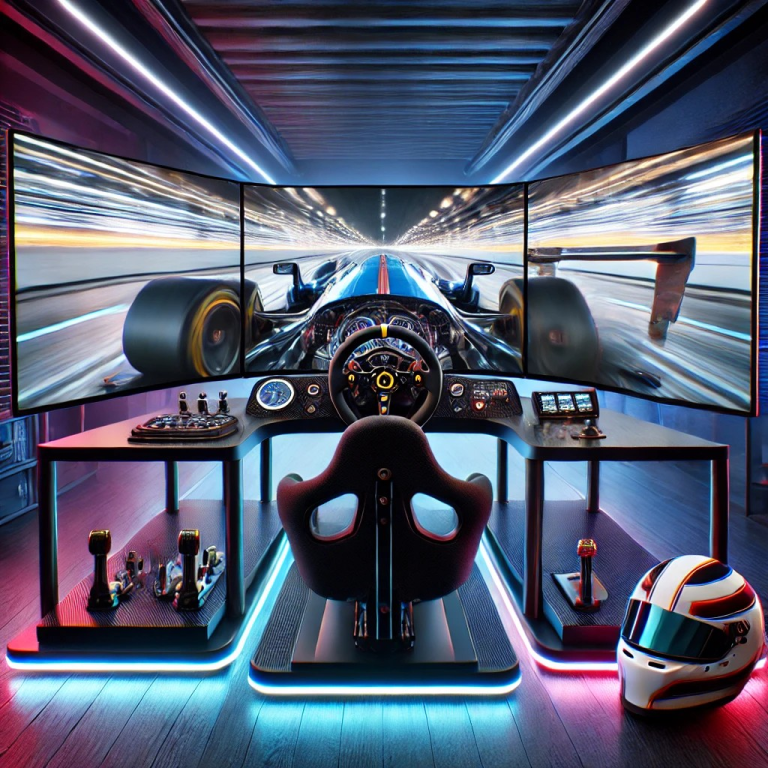Discover the Best VR Headset for Sim Racing
Sim racing has taken the gaming world by storm. It offers an immersive experience that’s as close as you can get to real racing without leaving your home.
But what if you could take it a step further?
Enter the world of Virtual Reality (VR). With a VR headset, sim racing becomes a whole new experience. You’re no longer just playing a game; you’re in the driver’s seat, feeling every turn and every bump on the track.
In this guide, we’ll explore the best vr for sim racing. We’ll delve into key features, compare top models, and help you make an informed choice.
Whether you’re a seasoned sim racer or a newbie, this guide is for you. Let’s gear up and find the best VR headset for racing sim adventures.
Why Sim Racing in VR is a Game-Changer
Sim racing in VR transforms a fun pastime into a breathtaking experience. It places you right inside the cockpit, offering an unrivaled sense of immersion. Unlike flat screens, VR fully engages your senses, making every race feel genuine.
The depth of field in VR allows for a 360-degree view of the track. You can glance at your rearview mirror or look around corners, just like in a real car. This freedom enhances strategy and reaction time during races.
With VR, you get to enjoy lifelike details and scenery. Racing games benefit significantly from VR’s ability to render realistic environments, making each circuit feel more authentic.
Another advantage is the enhanced sense of speed. VR gives you a more accurate perception of speed and movement, making the thrill of racing more intense.
But it’s not just about sight and speed. Some VR setups include haptic feedback, adding a tactile dimension to your experience. You’ll feel the vibrations of the track and the force of turns, adding more layers to the immersion.
Key Features to Consider When Choosing a VR Headset for Sim Racing
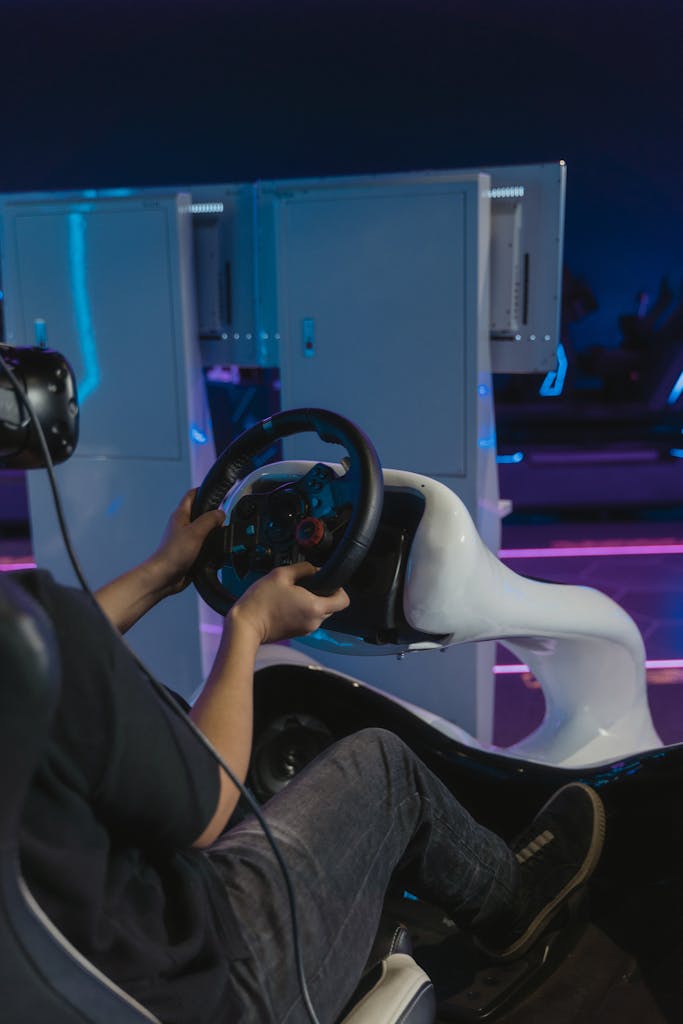
Selecting the best sim racing vr headset involves several essential considerations. The right headset can dramatically enhance your racing experience. Here are key features you should prioritize.
First, high resolution and sharp image quality are crucial. They ensure a visually rich and immersive driving experience. Details can make the difference between spotting a hazard or missing it.
The field of view (FOV) is another vital factor. It affects your peripheral vision in the game, enhancing realism. A wider FOV improves your situational awareness on the track.
Refresh rate and low latency ensure smooth and responsive gameplay. Faster refresh rates minimize motion blur and eye strain. Low latency helps maintain the illusion of reality without delay.
Comfort cannot be ignored, especially for long sessions. A well-designed headset should offer adjustable straps and adequate cushioning to reduce fatigue.
For precise gameplay, accurate tracking and responsiveness are essential. Poor tracking can disrupt the immersion and ruin the racing experience. Aim for systems with reliable tracking technology.
Compatibility is also critical, especially with racing games and peripherals. The best VR headset should seamlessly work with your favorite titles and racing accessories. Consider integration with popular wheels and pedals for an authentic setup.
Other factors include:
- Lightweight design for extended wear
- Adjustable interpupillary distance (IPD) for visual comfort
- Wireless options for freedom of movement
- Built-in audio solutions for immersive sound
- User-friendly interface and easy setup
Choosing a VR headset involves balancing these factors against your budget. Some features may be more important to you based on personal preferences or existing hardware. Prioritize what enhances your sim racing experience most effectively.
Resolution and Image Quality
Resolution is a primary feature when picking a VR headset. Higher resolution delivers better clarity and crisper images. This directly enhances your ability to spot track details quickly.
Image quality also depends on display type. OLED and LCD panels each have pros and cons. OLED often offers deeper blacks and richer colors, while high-end LCDs can provide sharp images too.
Avoid the screen door effect by choosing headsets with higher pixel density. This eliminates the grid-like pattern some users see in lower resolution headsets. The result is a more immersive, seamless visual experience.
Field of View (FOV)
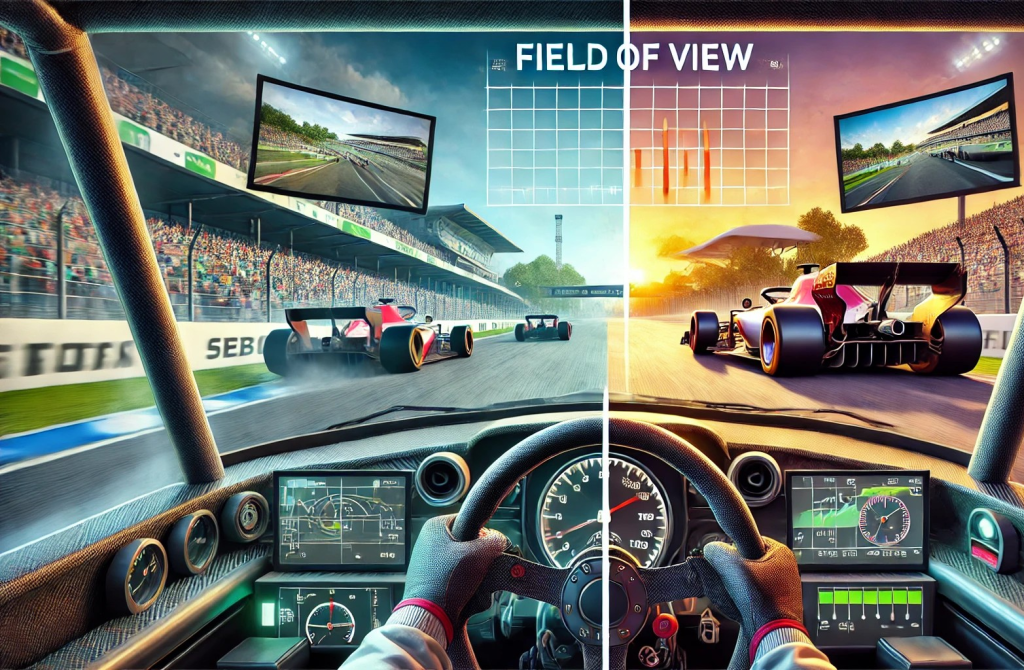
Field of View (FOV) is another essential attribute. A larger FOV provides a more comprehensive view of the racing environment. It simulates the natural range of vision you’d have in a real car.
With an expansive FOV, you get better situational awareness. You can see opponents approaching from the side, enhancing your reaction time. This can significantly impact your racing performance.
FOV can vary widely between VR headsets. Some offer over 100 degrees, while premium models extend much further. Consider how immersive you want your experience to be when selecting a headset.
Refresh Rate and Latency
A high refresh rate is paramount for smooth racing. It’s measured in hertz (Hz) and denotes how often the screen refreshes per second. Higher rates mean better visual smoothness, crucial for fast-paced racing games.
Low latency is equally important. It reduces the delay between your movements and what you see on-screen. Reduced latency is key to maintaining immersion and avoiding discomfort during gaming.
Ideally, look for VR headsets with at least a 90Hz refresh rate. This provides a seamless experience without perceptible lags or motion trails, enhancing the realism of sim racing.
Comfort and Ergonomics
Comfort is crucial, especially for those long racing sessions. A well-designed headset should distribute weight evenly. This minimizes strain on your neck and face.
Consider the padding quality as well. Soft, breathable materials on face cushions and straps enhance comfort. They reduce the build-up of sweat and heat during extended play.
Adjustability is also important. Look for headsets with adjustable straps and interpupillary distance (IPD). These features ensure a snug fit and visual comfort, accommodating different users’ needs.
Tracking and Responsiveness
Tracking technology defines the accuracy of your movements in VR. Precise tracking is vital for a genuine sim racing experience. It reflects even subtle head movements accurately in-game.
Modern headsets use various tracking systems. Options include inside-out tracking that doesn’t require external sensors. Choose a system that aligns with your space and usage needs.
Responsiveness is tied to how effectively the system processes movements. Low-latency tracking ensures quick response to driver inputs, preserving the sense of realism.
Compatibility with Racing Games and Accessories
Your VR headset should work seamlessly with your favorite racing titles. Confirm that the headset supports the platforms and games you enjoy. Cross-platform support can be a valuable feature.
Also, consider compatibility with racing accessories. A headset that integrates well with steering wheels and pedal setups maximizes your racing experience. Look for products that don’t require complex setups or additional software.
Well-supported headsets often have extensive libraries of games and simulations. The broader the support, the more versatile your sim racing experiences can become.
Top VR Headsets for Sim Racing in 2023/2024
For sim racing enthusiasts, the right VR headset can transform the experience. As we look to 2023 and 2024, several models stand out. These headsets cater to different preferences and budgets, ensuring there’s something for everyone.
Oculus Quest 2 – Best Budget Option at $400
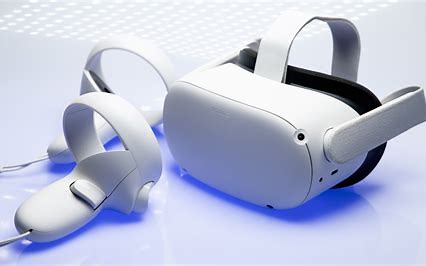
The Oculus Quest 2 proves that affordability doesn’t mean compromising on quality. This versatile headset supports standalone operation, offering wireless freedom. It’s also compatible with PC VR games via Oculus Link.
Despite its budget-friendly price, Quest 2 delivers a surprisingly smooth and immersive experience. The display boasts a high resolution that ensures crisp visuals, essential for spotting details on the track.
Its lightweight design enhances comfort, perfect for extended racing sessions. While it lacks some advanced features, the Quest 2’s value for money is hard to beat for sim racing beginners.
Valve Index – Best Overall Experience $499 Headset Only
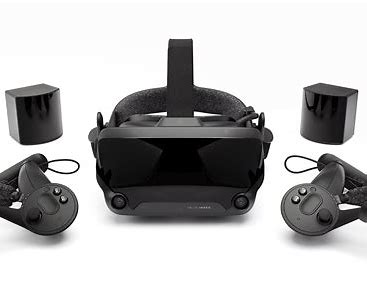
Valve Index is renowned for its premium performance and comprehensive features. It offers one of the highest refresh rates available, up to 144Hz, ensuring fluid and responsive gameplay.
The headset’s field of view is wider than many competitors, enhancing immersion significantly. It makes a noticeable difference in sim racing, where situational awareness is crucial.
Audio solutions are also a highlight, with built-in speakers providing clear and immersive sound. For those seeking a high-end VR headset that checks all the boxes, the Valve Index is an outstanding choice.
HP Reverb G2 – Best Visual Clarity $599
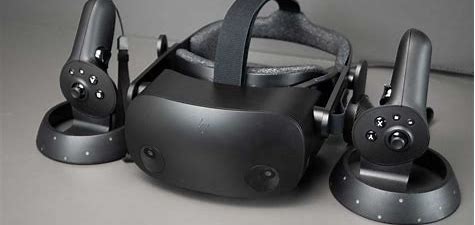
HP Reverb G2 stands out in the VR market for its exceptional visual clarity. It features a stunning 2160×2160 resolution per eye, delivering highly detailed and vivid images.
This clarity is vital for sim racing, where distinguishing track details can impact performance. The Reverb G2’s visuals make you feel like you’re truly in the driver’s seat.
With top-notch lenses and fantastic audio quality, it offers a holistic VR experience. The Reverb G2 is ideal for racers who prioritize visuals in their sim racing setup.
HTC Vive Pro 2 – Best for Room-Scale Tracking $1399
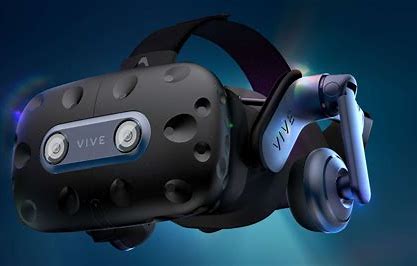
For racers interested in precise tracking, the HTC Vive Pro 2 excels with its room-scale capabilities. It uses external sensors to offer unmatched tracking accuracy, even during dynamic movements.
The headset boasts impressive image quality with a 5K resolution. This provides clear visuals across various racing environments, contributing to an immersive experience.
Comfort is also a focus, with ergonomic features that enable long-lasting wear. HTC Vive Pro 2 is an excellent choice for those who want excellent tracking in a VR headset.
Pimax 8K X – Best Field of View $1299
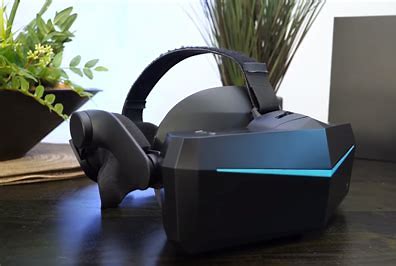
Pimax 8K X leads the pack with its extraordinary field of view, close to 200 degrees. This extensive FOV ensures minimal blind spots, enhancing your situational awareness dramatically in sim racing.
Equipped with dual 4K displays, it offers remarkable visual fidelity, so every detail is sharp and vibrant. This aspect elevates the racing experience, providing an immersive view of the virtual track.
The Pimax 8K X is perfect for hardcore sim racers who crave visual precision and broad visibility. Its wide FOV creates a compellingly realistic driving environment that few headsets can match.
Enhancing Your Sim Racing Setup for VR
To fully enjoy sim racing in VR, fine-tuning your setup is crucial. This involves choosing the right gear and making your space VR-ready.
Investing in high-quality racing wheels and pedals can significantly elevate your racing experience. They provide tactile feedback that aligns with the immersive qualities of VR.
Moreover, creating a dedicated play space tailored for VR can enhance safety and comfort. This ensures you have ample room for movement without obstacles, reducing the risk of mishaps.
Lighting and environmental adjustments can also improve immersion. Consider using blackout curtains or dimming lights to minimize distractions.
Finally, don’t forget to maintain your equipment regularly. Keeping your gear in top shape ensures longevity and consistent performance.
Choosing the Right Racing Wheel and Pedals
A solid racing wheel is the cornerstone of any sim racing setup. It offers precise control and realistic feedback that standard controllers can’t match.
Look for wheels with force feedback, as they simulate road conditions, providing a more realistic experience. This feature lets you feel every corner and brake, enhancing immersion.
Pedals are just as important. Choose models with progressive resistance and adjustability, allowing for a customized feel that suits your driving style.
Adjusting Your Play Space for Optimal VR Experience
Your play space should accommodate the dynamic movements involved in VR racing. Ensure there’s enough clearance for safe and comfortable gameplay.
Decluttering the area can prevent accidents and improve focus. Fewer obstacles mean fewer distractions, allowing you to concentrate on the race.
Consider floor mats or padding to enhance comfort. This simple addition can reduce fatigue during long racing sessions, making your VR experience more enjoyable.
Overcoming Common VR Challenges in Sim Racing
Sim racing in VR offers an unmatched experience, but it’s not without its hurdles. Motion sickness, hardware demands, and configuration issues can pose challenges.
Addressing motion sickness is essential. Many users experience discomfort when first adapting to VR. This issue can detract from the immersive experience if left unresolved.
Performance versus graphics quality is another critical balance to strike. Insufficient system resources can result in lag, while high graphics settings can affect performance.
Optimizing your setup can help overcome these obstacles. Fine-tuning VR settings and ensuring adequate hardware can minimize hiccups during gameplay.
Lastly, maintain patience and practice. Gradually building up your VR session duration can help acclimate your body to the virtual environment, reducing any discomfort over time.
Dealing with Motion Sickness
Motion sickness is a common drawback in VR, but there are ways to mitigate it. Start by playing in shorter sessions to acclimatize your body.
Ensure your VR headset is properly calibrated to your vision. A well-adjusted headset can significantly reduce physical discomfort and motion-induced nausea.
Consider ginger supplements or wristbands designed for motion sickness if the problem persists. These can provide additional relief alongside VR adjustments.
Finding the Perfect Balance Between Performance and Graphics
Balancing performance with graphics quality is vital for smooth VR sim racing. Lowering graphics settings can significantly improve performance on less powerful systems.
Prioritize essential settings like refresh rate and resolution for clarity and responsiveness over less critical visual enhancements. This can help maintain a fluid experience.
Experiment with different configurations until you find an optimal balance. Testing settings gradually allows you to achieve the best compromise for your system’s capabilities.
The Future of VR and Sim Racing
The future of VR in sim racing holds significant promise. Rapid advancements in technology are set to enhance realism and immersion even further.
Emerging features like eye-tracking and haptic feedback are set to revolutionize the user experience. These technologies offer deeper engagement by responding dynamically to user actions and gaze.
Cross-platform compatibility is likely to expand, ensuring more users can access cutting-edge VR experiences. With these innovations, the line between virtual and real-world racing continues to blur, paving the way for the next generation of immersive sim racing.
Frequently Asked Questions
What is the best VR headset for sim racing?
Choosing the best VR headset depends on your budget and preferences. Popular options include the Valve Index and Oculus Quest 2.
Does a high refresh rate matter in sim racing?
Yes, a higher refresh rate results in smoother motion, reducing blurriness and enhancing realism.
Is wired or wireless better for VR racing?
Wired headsets generally offer more stability, though wireless options provide greater freedom of movement.
Do I need a powerful PC for VR sim racing?
Yes, a robust PC is crucial to run VR games smoothly and at high settings.
How can I reduce motion sickness in VR?
Gradually increasing playtime and selecting a VR headset with a high refresh rate can help reduce motion sickness.
Conclusion: Choosing the Best VR Headset for Your Sim Racing Needs
Selecting the best VR headset for sim racing involves considering various factors. Key elements include resolution, refresh rate, and field of view. Comfort and compatibility with your gaming setup are equally important.
Each headset offers unique advantages tailored to different preferences and budgets. Whether you opt for the immersive Valve Index or the budget-friendly Oculus Quest 2, your choice should enhance your racing experience. Evaluate features against your racing needs for the best fit.
Remember, the right VR headset elevates sim racing to new levels. By prioritizing what matters most to you, you can transform your virtual driving adventures.
